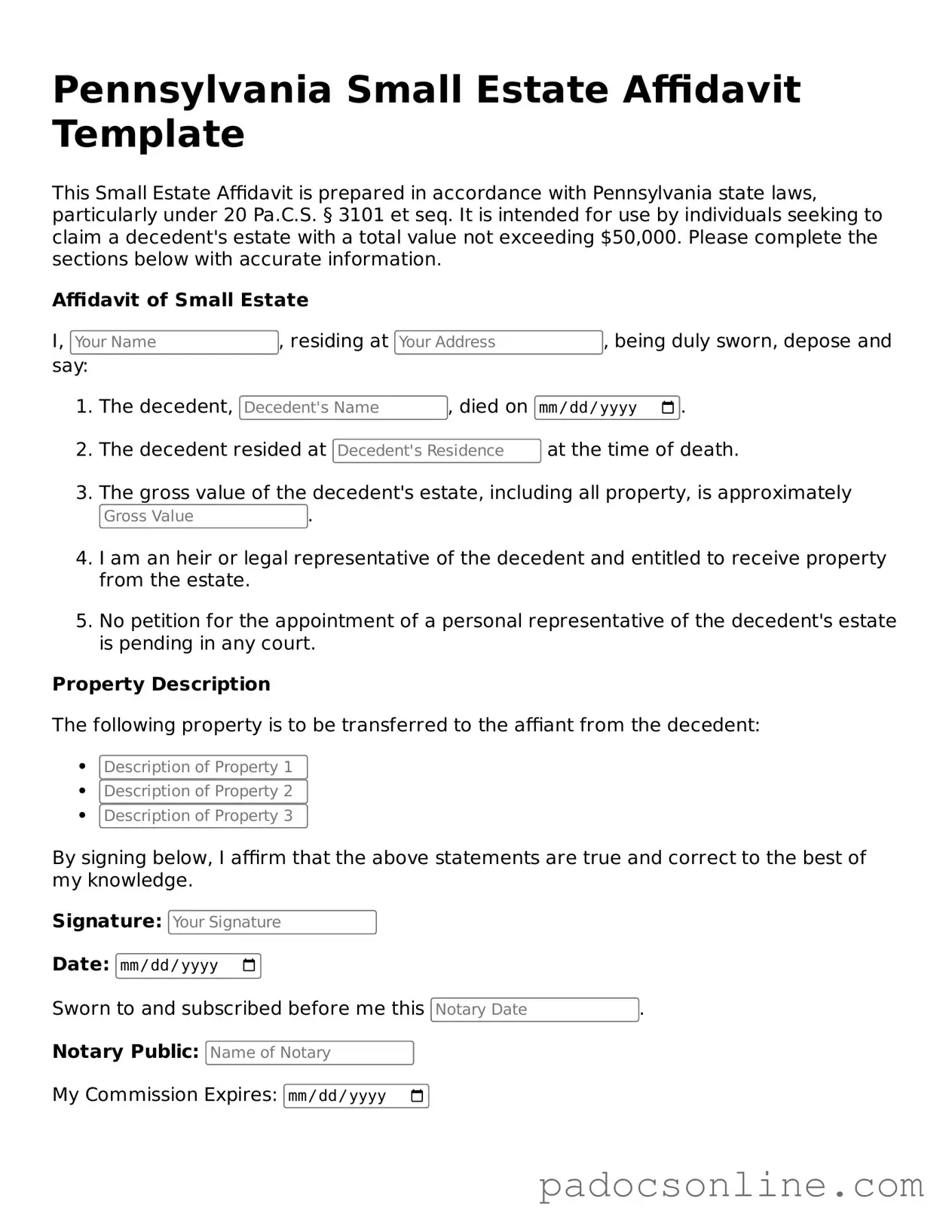Completing the Pennsylvania Small Estate Affidavit form can be straightforward, but many individuals make common mistakes that can delay the process. One frequent error is failing to provide accurate information about the deceased. It is essential to include the full name and date of death. Omitting or misrepresenting these details can lead to complications.
Another mistake occurs when individuals do not list all the assets of the estate. The affidavit requires a complete inventory of the deceased’s property. Leaving out any assets, such as bank accounts or real estate, can result in legal issues later on.
Many people overlook the requirement for notarization. The Small Estate Affidavit must be signed in front of a notary public. Failing to do this can invalidate the document, causing unnecessary delays in settling the estate.
Providing incorrect or incomplete identification can also be problematic. The form typically requires identification from the person filing the affidavit. Ensure that the identification is current and clearly legible to avoid rejection of the form.
Some filers neglect to check the eligibility requirements for using the Small Estate Affidavit. Not all estates qualify, and misunderstanding these criteria can lead to wasted time and effort.
Another common issue is not including the necessary supporting documents. Along with the affidavit, additional paperwork may be required, such as a death certificate. Missing these documents can stall the process significantly.
Inaccurate calculations of the total value of the estate can also cause issues. The affidavit must reflect the correct value of assets. Underestimating or overestimating can create problems with the court.
People sometimes forget to include all heirs and beneficiaries. It is crucial to list everyone who has a claim to the estate. Omitting an heir can lead to disputes and legal complications.
Lastly, individuals may not follow the specific instructions provided on the form. Each section has particular requirements that must be adhered to. Ignoring these can result in the form being returned for corrections.
By being aware of these common mistakes, individuals can improve their chances of successfully completing the Pennsylvania Small Estate Affidavit form without unnecessary delays.
